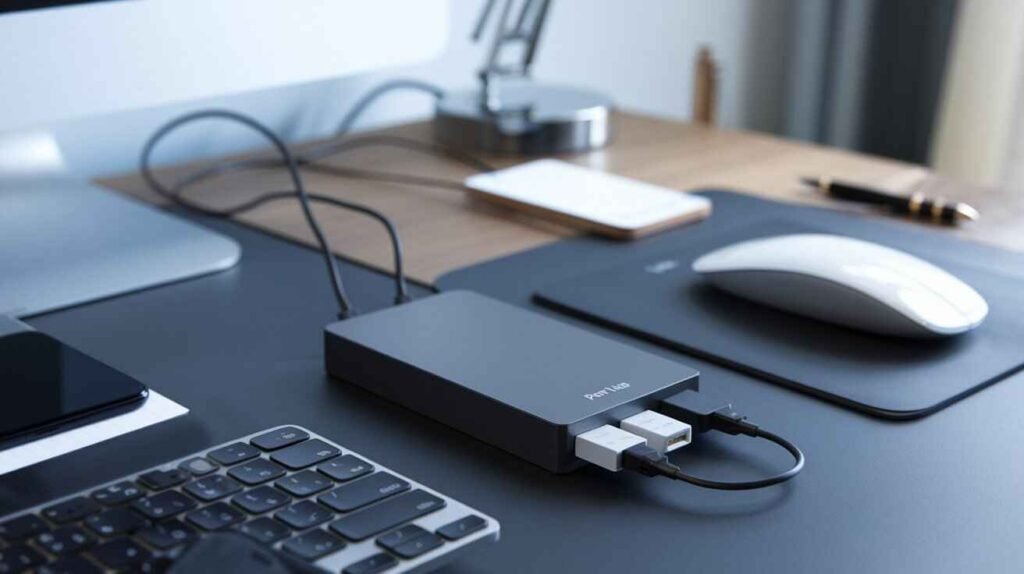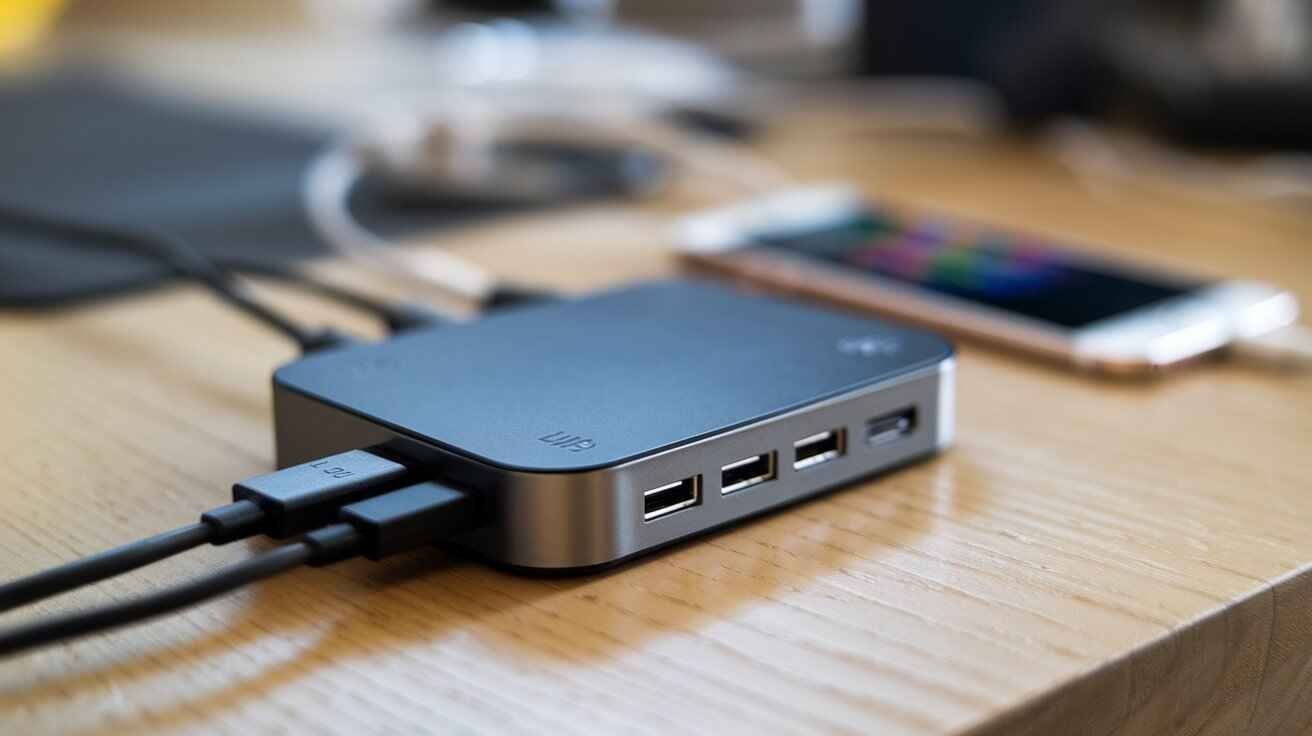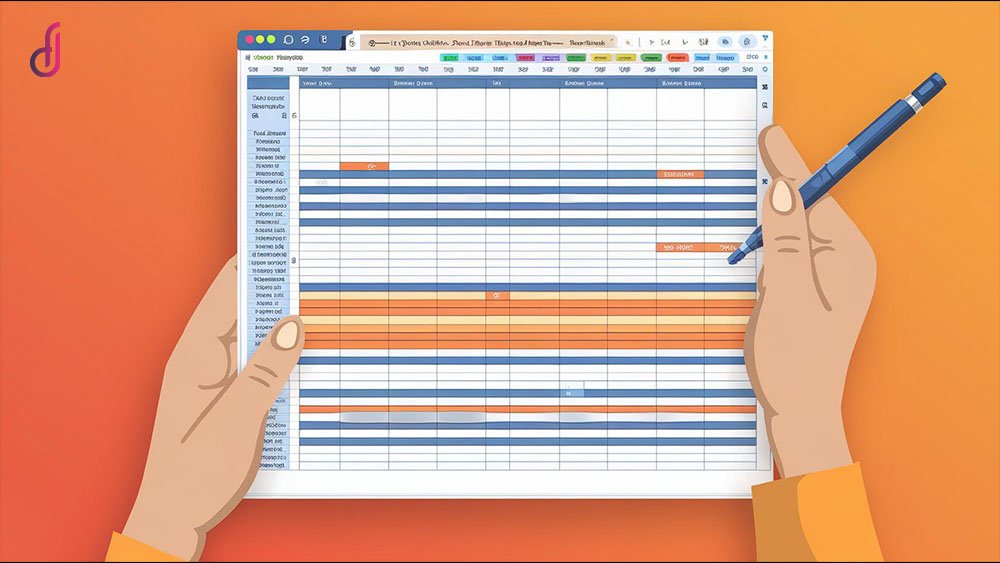In these days generation-driven global, having multiple devices linked to your computer or PC is critical. However, most computers have a constrained wide variety of USB ports. This is where a port hub comes into play. A port hub allows you to connect more than one gadget concurrently, enhancing productiveness and simplifying your workspace. Let’s dive deeper into the arena of port hub and the way it can make your digital existence extra handy.
What Is a Port Hub?
Definition of a Port Hub
A port hub is a device that expands a single USB port into a couple of ports, allowing users to attach several USB devices along with external hard drives, keyboards, and mice all of a sudden. This is good for individuals who paint with several gadgets but have constrained available ports on their number one gadget.
Why You Need a Port Hub
Solving Limited USB Ports on Devices
Whether you’re the usage of a pc or computing device, you may find that you don’t have sufficient USB ports to connect all of your gadgets. A port hub solves this difficulty by multiplying your to-be-had ports, so you don’t need to constantly unplug and replug special devices.
Ease of Connecting Multiple Devices
With a port hub, you may connect the entirety of your telephone and tablet to external garage devices without the problem of dealing with cables. This makes your everyday obligations smoother and greater efficient.
USB 3.0 7-Port Hub: A Game-Changer in Connectivity
One of the most effective alternatives on the market is the USB 3.0 7-Port Hub. This hub is designed to take your connectivity to the next level, particularly when you want rapid facts transfer and more than one connection immediately.
USB 3.0: Faster Data Transfers
The USB 3.0 ports provide transfer speeds of as much as 5Gbps, which is 10 times quicker than well-known USB 2.0 ports. With this approach, you can switch a 1080p film in just 2 minutes and 18 seconds, in comparison to 7 minutes and 36 seconds with a USB 2.0 port. The USB 3.0 7-Port Hub makes huge document transfers seamless, improving your productivity.
Multiple Devices, No Switching Needed
With 7 statistics transfer ports, this hub gets rid of the want to switch between devices. You can have your outside tough drives, keyboard, mouse, printer, and more connected at the same time, simplifying your workspace and allowing you to be cognizant of your responsibilities.
Driver-Free Installation
Another gain of the USB 3.0 7-Port Hub is that it does not require drivers for fundamental running systems like Windows 10, 8.1, eight, 7, Vista, XP, Mac OS X, and Linux. It’s also backward well suited with USB 2.0 and 1.1 devices. However, the actual transmission velocity could be limited with the aid of the tool’s settings.
Different Types of Port Hub
Powered vs. Non-Powered Port Hub
Advantages of Powered Port Hub
Powered port hub come with their energy delivery, which guarantees that each connected tool gets enough strength. This is in particular useful for high-electricity gadgets like external tough drives or printers that could require extra strength than your pc or desktop can provide.
Benefits of Non-Powered Port Hub
Non-powered port hub draw power at once out of your connected device, making them extra transportable and convenient for tours. However, these hubs may conflict to power larger or extra strength-worrying devices.
USB 2.0 vs. USB 3.0 vs. USB 3.1 Port Hub
Speed Comparison
The version of the port hub you pick can extensively have an effect on data transfer speeds. As referred to in advance, the USB 3.0 port hub gives hurries up to 5Gbps, making it an outstanding preference for moving huge documents quickly. If you’re managing enormous media documents or information, a USB 3.0 7-Port Hub can dramatically reduce switch instances.
Compatibility with Different Devices
A port hub that supports USB 3.0 or USB 3.1 is backward well-suited, which means it could work with older USB 2.0 devices. However, the rate could be limited to the functionality of the related tool.
How to Choose the Best Port Hub
Factors to Consider When Choosing a Port Hub
Number of Ports
Depending on what number of gadgets you need to connect, the variety of ports is an essential element. For instance, a USB 3.0 7-port hub is right for users who need to connect more than one gadget at the same time, getting rid of the want to replace among devices.
Power Supply
If you are connecting power-in-depth gadgets, bear in mind to select a powered port hub. For lighter use, a non-powered hub is probably more than sufficient.
Data Transfer Speeds
If moving massive files quickly is essential to you, opt for a USB 3.0 port hub or higher. These provide a great deal quicker speeds than their older USB 2.0 counterparts.
Portability
For individuals who journey often or need a solution for on-the-move use, a small, lightweight port hub is the precise desire. A large port hub might be greater appropriate for a permanent computer setup.
Benefits of Using a Port Hub
Increased Connectivity
One of the most apparent benefits of a port hub is that it will increase the quantity of devices you may connect with your pc straight away. This is ideal for people with numerous USB peripherals.
Organized Workspace
A port hub permits you to hold all of your USB gadgets in a single place, decreasing cable clutter and growing a more organized, green workspace.
Improved Efficiency
A port hub boosts your productivity by permitting you to attach all your essential gadgets right away. Whether you’re operating or gaming, having everything plugged in concurrently improves your usual efficiency.

How to Set Up a Port Hub
Step-via-Step Guide to Using a Port Hub
Connecting the Port Hub to Your Device
First, connect the port hub to an available USB port on your computer or laptop.
Plugging in Your Devices
Next, plug in your USB gadgets—whether or not it’s a mouse, keyboard, or external pressure—into the hubs to be had ports.
Ensuring Proper Power Supply
If you’re the use of a powered port hub, ensure it is connected to a strength supply for the most advantageous performance, specifically when working with a couple of devices without delay.
Common Issues with Port Hub
Connectivity Problems
Occasionally, some devices may not be recognized via the port hub, especially if it’s overloaded or lacking enough energy. Ensure the hub has sufficient energy and that your devices are functioning nicely.
Power Distribution Issues
Non-powered port hub may battle with distributing sufficient power to all connected devices, specifically if numerous electricity-hungry peripherals are plugged in.
Slow Data Transfer Speeds
If you experience sluggish record transfers, it can be because your device or the port you’re the use of doesn’t guide the port hub’s maximum pace. Always try to healthy the hub to the suitable USB version for better performance.
Port Hub for Different Devices
Port Hub for Laptops
Since many laptops have confined USB ports, a portable port hub can grow connectivity without including much bulk for your setup.
Port Hub for Desktops
A larger port hub with more than one port is remarkable for computer setups, permitting you to connect multiple peripherals like printers, scanners, and outside drives.
Port Hub for Gaming Consoles
Gamers frequently use port hub to connect numerous add-ons, including controllers, headsets, and outside storage, making their gaming revel in greater seamless.
Port Hub vs. Docking Station
Key Differences
A port hub specializes in expanding USB connectivity, even as a docking station adds extra features like video outputs, Ethernet connections, and charging skills, making it more versatile for customers with complex setups.
Which Should You Choose?
If you simply want more USB ports, a port hub will suffice. But in case you’re seeking out an extra comprehensive solution that helps video and community connections, a docking station is the manner to head.
The Future of Port Hub
Trends in USB Technology
The future of the port hub lies in faster and greater efficient USB versions, with USB 4.0 expected to revolutionize connectivity with even higher facts transfer speeds.
Wireless Port Hub
Wireless port hub is already at the upward push, presenting even more flexibility using removing the need for bodily connections, permitting devices to connect seamlessly through wireless networks.
Conclusion
A port hub is an important device for absolutely everyone looking to enlarge their tool’s connectivity alternatives. Whether for work, gaming, or private use, the right port hub can greatly beautify your productivity and make coping with more than one device a great deal easier.
FAQs
What is a port hub?
A port hub is a tool that connects more than one USB gadget to a single port for your pc.
What are the advantages of a USB 3.0 port hub?
A USB 3.0 port hub gives speedy data transfer hurries up to 5Gbps, allowing quick document transfers.
Can I use a port hub with my telephone?
Yes, many port hubs work with smartphones and drugs, letting you join add-ons like keyboards.
Do I need drivers for a port hub?
Most port hubs are plug-and-play, which means no drivers are wanted for installation.
How do I pick the right port hub?
Look for the number of ports, whether or not it is powered or now not, and the rate (USB 3.0 is quicker).
Also Read: Cargo Electric Bike: The Future of Sustainable Transportation








One Response